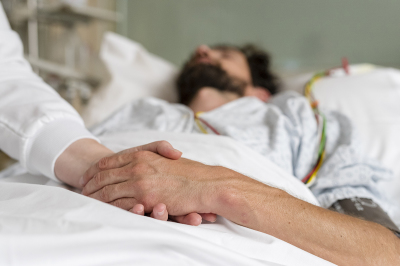Medically assisted suicide deaths may account for 10% of all deaths in Canada by 2034

Death by the hand of doctors, the increasingly accessible procedure in Canada, could account for 10% of all deaths by 2034.
The alarming projection reveals how the concerted effort by the Liberal government to brand euthanasia as “health care” has so successfully reshaped end-of-life care. Since modifying the criminal code to de-classify assisted suicide as murder and make it medicine, there have been 44,598 reported deaths.
Disturbing stories continue to break in the Canadian news about medical assistance in dying (MAiD). The stories reveal how commonplace the procedure is becoming in the country and, despite its prominence, how morally conflicting assisted suicide continues to be for those in health crisis and for the families left behind.
One such story took place in Quebec where a man developed painful, terrible bedsores because the hospital didn’t have the appropriate medical mattress. After four days of suffering, he asked for medical staff to end his life. Rather than sourcing a mattress, they complied.
This MAiD horror story took place in the same province and under the same federal government, that offered Christine Gauthier, the Canadian military veteran and Paralympic world champion assisted suicide instead of the wheelchair ramp she requires for day-to-day life.
Euthanasia is more readily available than some of the most basic care, note experts in the medical community who continue to sound the alarm.
The research study projects MAiD in Canada will account for 1 in 10 deaths within a decade – much higher than in California. Both territories have similarly sized populations, and both Canada and California legalized doctor-assisted suicide in 2016.
However, 15 times more Canadians die by MAiD than Californians. One key reason why the numbers are so different between territories is that institutions in Canada promote and educate the public on the option, which in turn amplifies the public’s view of its moral acceptability.
Most strikingly, the way the procedure is administered is different. In California patients must self-administer, ingesting the drug that kills them on their own. Canadians can choose to self-ingest or to have a doctor inject them with the life-ending drug.
When given the choice to have a doctor end their life or to end it themselves, patients select the doctor almost every time.
In 2021 alone, of the 10,057 people who died by MAiD in Canada only seven individuals self-ingested the drug that ended their lives, a study in The American Journal of Bioethics revealed. The overwhelming majority of patients — 10,050 of those who died — had a doctor inject the life-ending serum. In the same year, 486 Californians self-ingested the drug to end their lives.
People ultimately don’t want to end their lives themselves. But when a trusted doctor approves the life-ending procedure and then carries it out, deaths exponentially multiply.
If the Canadian healthcare system wanted to curb MAiD deaths, it could do so immediately by requiring Canadians to self-ingest. It won’t. It’s cheaper to end lives than sustain them; easier to inject a drug than source a mattress.
More and more Canadians will die by assisted suicide, and it will be the overburdened, mismanaged healthcare system that pushes them off the ledge.
Andrew Kooman is a Canadian writer of the weekly column Things I Wrote Down. He co-produced the docuseries MAiD in Canada, which explores the expanding euthanasia regime. You can watch the series for free at UnveilTV.




























